Getting Back to the Garden 2
It’s the longest day of the year, and, uncharacteristically HOT for San Francisco. I wake up, and go into the garden, because I must, or all that riotous growth will die without some attention. I feel like I’m going through the motions, still riding the waves of grief, but it’s comforting to prop up a sunflower or harvest some zucchini, the garden has been forgiving in my absence.
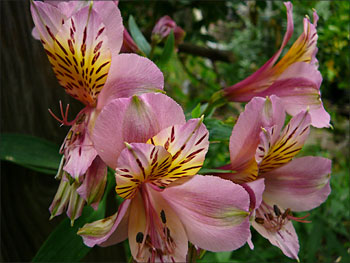
While my mom was in the hospital, we had a couple of unseasonable rains, which I was so grateful for. Now there is so much blooming, poppies, alstroemeria, marigold, alyssum, clarkia, wallflowers, succulents, lobelia, foxglove, and two varieties of rust/maroon colored sunflowers that I thought weren’t going to pop until the fall (One was called “Autumn Beauty”)
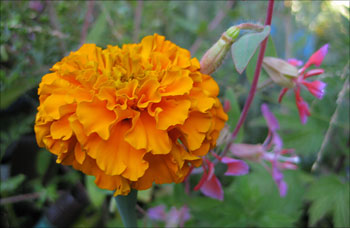
I have a bumper crop of a tasty zucchini called, “Black Beauty,” that I have had to do so little to, it wins the lazy gardening gold star!
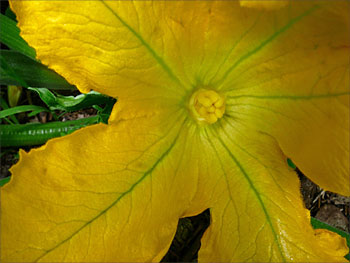
One surprise bloomer that I had forgotten that I had planted was St. John’s wort (Hypericum perforatum). June 24th is St. John’s Day, and the plant always blooms around this time. I had been somewhat afraid to plant it, for a while it was illegal to sell in California because it was invasive, but then I saw it at the store and picked it up, planted it in the fall.
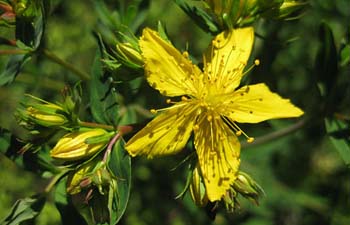
I have fond memories of picking it with the herb school in the Sierras on a deserted roadside, dropping the flowers into olive oil, where they would turn the oil red.
I haven’t used St. John’s wort internally much, but it’s interesting that it’s shown up at this time. I’m planning on making some oil and tincture, and I’ll report back on some of my own uses. Externally, St. John’s wort oil is really good for nerve damage, and I’ve had miraculous effects on some pretty ugly bruises.
One time I wacked myself in the forehead with some vise grips, when I was trying to loosen a bolt in a water tank. I had one of those bruises like you see in the cartoons, purple, green, and protruding. I used St. John’s wort and castor oils, and it went back down to a normal forehead very quickly.
Steven Foster had a really good description of it here.
I love the woo-woo mystical part:
One can speculate whether harvesting a specific holy day was simply a means to convey the best time to harvest the herb, or convey symbolism that imbued the herb with some greater unseen power. St. John’s wort, as you might guess, is best harvested on St. John’s Day (June 24th), often the time of peak blooming. If a sprig of the herb were placed under the pillow on St. John’s Eve, St. John himself may even appear in a dream, blessing the dreamer for another year.
Here are his instructions for making the oil:
It is simple to make St. John’s wort oil. The herb is harvested just as the plant comes into bloom. Take about one cupful of the fresh flowers, adding a sufficient quantity of olive oil to just cover the flowers. The fresh herb should be finely cut or crushed, covered with the oil, then placed in the sun or warm area for two to three weeks until the herb imparts its qualities to the oil. Shaking it once a day helps to bring more plant cell surfaces in contact with the menstruum, enhancing this simple extraction process. Once the allotted time (2-3 weeks) has passed, the herb should be pressed, strained from the oil, then stored in a dark, closed container in a cool place.
The yellow flowers will turn the oil a deep blood-red color. Basically you are extracting the pigment, hypericin, considered one of the biologically active compounds of the plant, found in the flowers as little black dots along the petal margins. It is best to use the fresh flowers, as hypericin may degrade upon drying. Store the oil for up to a year in a cool dark place.
I think he puts it better than I ever could!
So, as usual I have some herbal allies that are just popping up at the right time. I will probably make some St. John’s wort (or St. Joan’s wort, as Susun Weed calls it) flower tincture as well, there’s quite a bit of it. I have been drinking lots of lemon balm too, which is a traditional grieving herb.
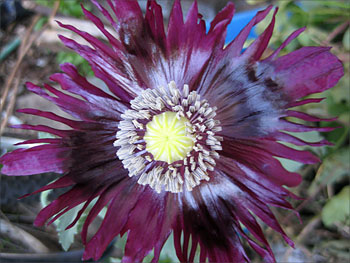
I’m leaving you with this fantastic poppy, which is growing in a crack in the cement under the porch. It’s a symbol for some kind of much-needed resilience.
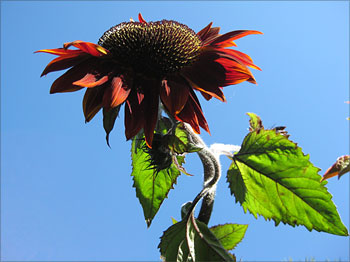
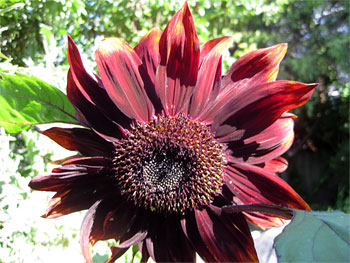

Your garden has done very well during your rest. I don’t have St. John’s Wort in the garden…yet…but I have used the tincture. It works, but it takes several weeks to show the effects. Another natural remedy for grief is the homeopathic remedy, Ignatia…I found it very helpful when I lost my brother.
Thanks, Sage B., right now I’m using the flower essence society’s Grief Relief, sporadically. I will try Ignatia as well, separately, I’m liking the fact that it’s supposed to help with insomnia and physical effects.